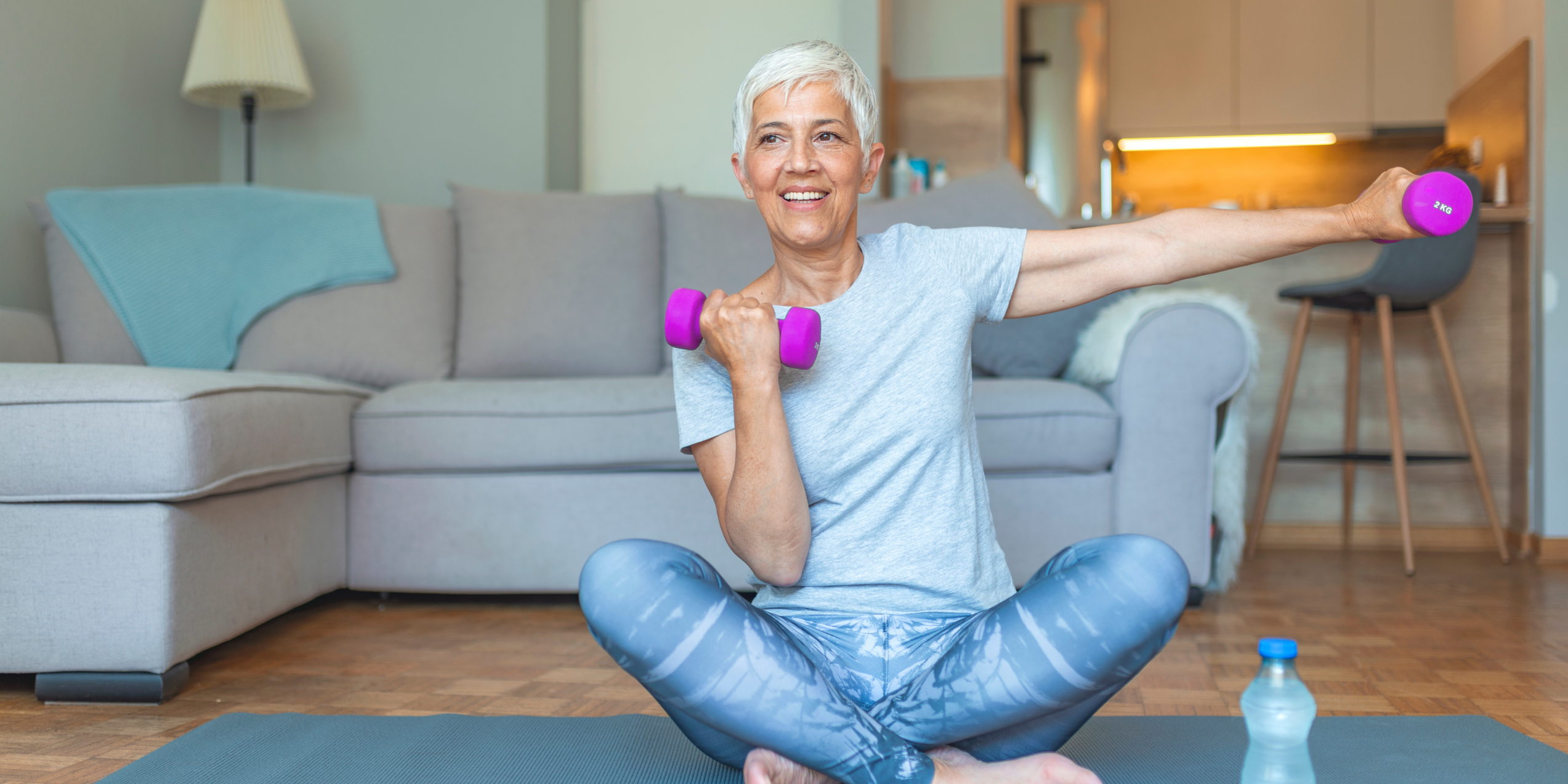By Barbara Broggelwirth, MS RDN, CDN
If you ask most older adults approaching their senior years, their desires are often the same – to maintain independence for as long as possible without having to rely on others for help with activities of daily living. This is known as “aging in place”. Living at home as you age requires consideration and planning, often many years ahead of time. As with most things in life, healthy aging is multifactorial. Things like genetics may not be in our control but lifestyle factors like exercise, following a healthy meal pattern, and getting recommended health screenings are within our control. This blog will cover some physical activities that will help to promote healthy aging.
When it comes to physical activity, most of us think that if we are engaging in one type of exercise or physical activity we are doing enough. However, research has shown that having a mix of four types of physical activity that include endurance, strength, balance, and flexibility are needed to stay strong into our later years.
Endurance activities are also referred to as aerobic or cardiovascular activities, they increase your breathing and heart rate. These improve the health of your heart, lungs, and circulatory system which is known to delay the onset of diabetes, colon and breast cancers, heart disease, and cognitive decline. When you engage in cardiovascular activities, it provides more blood to the brain, which can help to keep the brain healthy. Some ways to increase cardiovascular health:
- Brisk walking or jogging
- Yard work (mowing, raking)
- Dancing
- Swimming
- Biking
- Climbing stairs or hills
Strength training is important to maintain our muscle strength which can help to prevent falls and fall related injuries. Muscle mass and strength naturally decline with age, a process known as sarcopenia. This can start as early as age 30, and by age 80 a person can lose up to 50% of their muscle mass. According to the CDC, falls are the leading cause of injury-related deaths among adults 65 and older in the United States. In 2021, 38,742 older adults died from unintentional falls1. You are less likely to fall when your hip muscles and legs are strong.
Some ideas for increasing strength:
- Lifting weights or using resistance bands
- Carrying groceries
- Gripping a tennis ball
- Overhead arm curl
- Arm curls
- Wall push-ups
- Lifting your body weight
Balance control declines with age, and impaired balance is a major risk factor for falls among older adults. Balance exercises can help keep you moving safely and help you stay independent. According to research, specialized balance-focused exercise programs reduced the number of falls that resulted in minor injury by 37% and they reduced the number of falls leading to serious injury by 43%.
Approximately 61% of seniors who experienced a fall after doing balance-exercises were able to avoid breaking a bone because of the accident2.
Exercises for improving balance:
- Standing on one foot.
- The heel-to-toe walk.
- The balance walk.
- Standing from a seated position
According to the American Association of Orthopedic Surgeons, ligaments, the connective tissues between bones, shorten and lose flexibility, making joints feel stiff and more prone to injury. Ligaments also weaken and tear more easily, and when they tear, they heal more slowly. Tendons, the tissues that bind muscle to bone also become less elastic and weaker, making joints feel tight or stiff. Tendons lose health and become less able to handle loads. The less mobile joints are used, the less flexible and mobile older adults might be.
Some flexibility / stretching exercises:
- The back stretch exercise
- The inner thigh stretch
- The ankle stretch
- The back of leg stretch
Healthy aging requires intention and purpose. It is never too late to start. If you are not currently active, a doctor’s medical clearance may be recommended before starting an exercise program. You may also benefit from working with an exercise professional for guidance.
References:
- Cleveland Clinic. “Sarcopenia (Muscle Loss): Symptoms & Causes.” Cleveland Clinic, 3 June 2022, my.clevelandclinic.org/health/diseases/23167-sarcopenia.
- Callicutt, S. (2024) Why should senior citizens perform balance exercises, Freedom Care. Available at: https://freedomcare.com/why-should-senior-citizens-perform-balance-exercises/ (Accessed: 20 August 2024).
- https://www.nia.nih.gov/health/exercise-and-physical-activity/four-types-exercise-can-improve-your-health-and-physical
Barbara Broggelwirth, MS RDN, CDN is a registered dietitian nutritionist who works with Bariatric and Medical Weight Management patients to help them achieve their health and weight loss goals.

